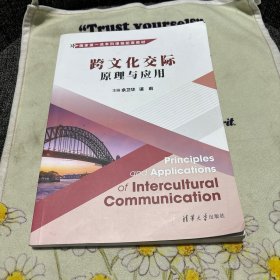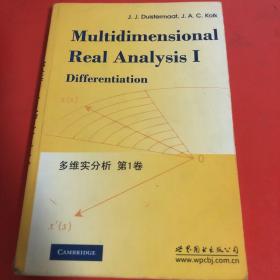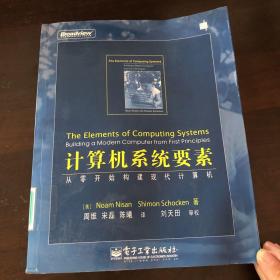
跨文化交际:原理与应用
¥ 50 6.7折 ¥ 75 八五品
仅1件
江苏南京
认证卖家担保交易快速发货售后保障
作者余卫华;谌莉;曹环;楼凌玲;张悦;王敏
出版社清华大学出版社
出版时间2022-10
版次1
装帧其他
上书时间2024-03-03
- 店主推荐
- 最新上架
商品详情
- 品相描述:八五品
图书标准信息
- 作者 余卫华;谌莉;曹环;楼凌玲;张悦;王敏
- 出版社 清华大学出版社
- 出版时间 2022-10
- 版次 1
- ISBN 9787302614449
- 定价 75.00元
- 装帧 其他
- 开本 16开
- 纸张 胶版纸
- 字数 384.000千字
- 【内容简介】
- 《跨文化交际:原理与应用》是国家级一流本科课程“东方遇见西方:跨文化交际之旅”的配套教材。本教材采用全英文编写,内容涉及跨文化交际入门、言语和非言语交际、交际能力和跨文化能力、文化模式、不同社会语境下的跨文化交际、文化偏见、身份、全球化和全球公民,希望在提高学生英语水平的同时培养他们的跨文化交际能力。教材的主要特点是在引入跨文化交际原理时采用案例进行分析和讲解,提升学生的学习兴趣,培养他们的问题意识和思辨能力,使其尽可能在轻松愉快的学习过程中获得更好的学习体验和学习效果。 本教材另配有各章节习题、测试题及内容丰富的PPT 课件,读者可登录www.tsinghuaelt.com下载使用。 本教材适用于高等学校跨文化交际类课程,也可供在智慧树平台学习该门课程的学生和对跨文化交际感兴趣的相关人士使用。
- 【作者简介】
- 余卫华,英国杜伦大学博士,教授,浙江越秀外国语学院稽山学者,英语学院院长,浙江省翻译协会副会长,中国语言教育研究会常务理事,浙江省省级一流专业(翻译)负责人。主持国家社科基金中华学术外译一项、教育重点课题一项、国家级一流课程一门及省市厅级课题多项。在权威或核心期刊发表学术论文40余篇,出版学术著作和教材20多部。
- 【目录】
-
Brief Introduction to Intercultural Communication
11 Defining and Describing Culture 2
111 Two Types of Culture 2
112 Five Dimensions of Culture 3
113 Characteristics of Culture 5
12 Culture and Communication9
121 Defining and Describing Communication9
122 Relationship Between Culture and Communication 10
13 Defining and Describing Intercultural Communication13
131 Definition of Intercultural Communication 13
132 Five Elements in the Communication Process 14
Chapter 2
Verbal and Nonverbal Communication
21 Introduction to Verbal Communication 22
211 Role of Language in Verbal Communication 23
212 Receptive and Productive Language Skills 25
213 Need for Using Bias-Free Language 26
214 Types of Verbal Communication 26
22 Verbal Communication Skills 29
221 Effective Verbal Communication 29
222 Examples of Verbal Communication Skills in the Workplace 29
223 7Cs of Communication 32
224 Steps to Improve Your Verbal Communication Skills in the Workplace 33
23 Introduction to Nonverbal Communication 36
231 Definition of Nonverbal Communication 37
232 Types and Features of Nonverbal Communication 37
24 Functions of Nonverbal Communication 43
241 Conveying Meaning43
242 Regulating Conversational Flow44
243 Affecting Relationships45
244 Expressing Identities49
25 Guidelines to Improve Nonverbal Competence 51
Chapter 3
Communicative Competence & Intercultural Competence
31 Communicative Competence & Intercultural Communicative
Competence60
311 Framework for Communicative Competence 61
312 Concept of Intercultural Communicative Competence 62
313 Concept of Transcultural Competence 63
314 Skills of Multilingual Communicators 64
32 Communicating Under Different Cultural Contexts 65
321 Differences in Greetings66
322 Differences in Approval and Disapproval Movements 68
323 High-Contact Culture & Low-Contact Culture 71
324 Signs Cannot Be Used Casually Abroad 73
33 A Recipe for Successful Intercultural Communication 75
331 A Heart Set 76
332 A Mindset 77
333 A Skill Set 78
334 Other Practical Approaches 79
34 Culture Shock 79
341 Five Stages of Culture Shock 79
342 Reverse Culture Shock 83
343 Transition Shock 84
Chapter 4
Cultural Patterns
41 A Brief Introduction to Cultural Patterns 90
411 Beliefs91
412 Values 92
413 Norms94
42 High-Context & Low-Context Cultures 96
421 High-Context Culture96
422 Low-Context Culture 97
423 Differences Between High-Context Culture & Low-Context Culture 98
424 China—A Country in a High-Context Culture 101
425 America—A Country in a Low-Context Culture 102
43 Cultural Dimensions Theory 106
431 Masculinity & Femininity 107
432 High Power Distance & Low Power Distance 109
433 Collectivism & Individualism 113
434 Uncertainty Avoidance 117
435 Long-Term Orientation & Short-Term Orientation 119
44 Values Orientation Theory124
441 Human-Nature Orientation 125
442 Man-Nature Orientation126
443 Time Orientation 127
444 Activity Orientation 128
445 Relational Orientation 129
Chapter 5
Intercultural Communication in Various Social Contexts
51 Family and Friends136
511 Brief Introduction to Relationship136
512 Family Relationships 137
513 Friendships 138
52 Education140
521 Relationship Between Education and Culture 140
522 Cultural Dimensions in an Educational Context 141
53 Economics and Business144
531 Three Main Factors Influencing International Communication in Business144
532 Important Tips on Doing Business Internationally146
54 Principles and Rules of Intercultural Communication148
Chapter 6
Cultural Bias
61 Stereotype158
611 Definition of Stereotype158
612 Three Major Types of Stereotypes 159
613 Two Dimensions of Stereotypes 160
614 Characteristics of Stereotypes 160
615 Causes of Stereotypes 161
616 Influences of Stereotypes162
617 Tips on Reducing Stereotypes 163
62 Prejudice 172
621 Definition of Prejudice173
622 Seven Types of Prejudice173
623 Causes of Prejudice 177
624 Influences of Prejudice 179
63 Racism183
631 Brief Introduction to Racism183
632 Four Main Types of Racism 184
633 Causes and Effects of Different Types of Racism 186
634 Ways to Cope with Racism192
64 Stereotypes, Prejudice & Intercultural Communication 194
641 Interrelationship Among Stereotypes, Prejudice & Discrimination194
642 Impacts of Stereotype and Prejudice on Intercultural Communication 197
Chapter 7
Identity
71 Personal Identity 202
72 Social Identity 206
721 Understanding of Social Identity 207
722 Henri Tajfel and His Social Identity Theory208
723 Three Stages of Social Identity Awareness 209
724 Realistic Group Conflict Theory: Intergroup Conflict212
725 Identity Threat 217
73 Cultural Identity 220
731 Definition of Cultural Identity 220
732 Major Types of Cultural Identities 222
733 Formation of Cultural Identity: Jean S Phinney’s Three-Stage Model of
Ethnic Identity Development 225
Chapter 8
Globalization and Global Citizenship
81 Globalization 234
811 Overview of Globalization 234
812 Economic Globalization 237
813 Political Globalization 239
814 Cultural Globalization240
82 Global Citizenship 248
821 Definition of Global Citizenship 248
822 Core Themes of Global Citizenship 249
823 Outlooks of Global Citizenship 251
824 Skills Needed for Global Citizenship251
83 Global Citizenship Education 256
831 Definition of Global Citizenship Education 256
832 Pedagogical Features of Global Citizenship Education 257
References 269
点击展开
点击收起
相关推荐
— 没有更多了 —



























以下为对购买帮助不大的评价